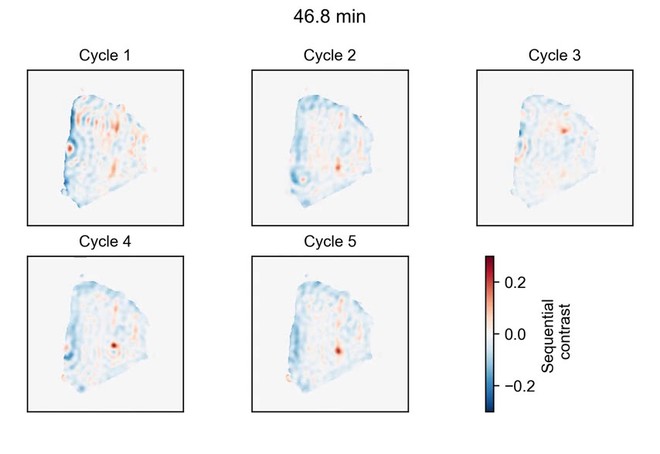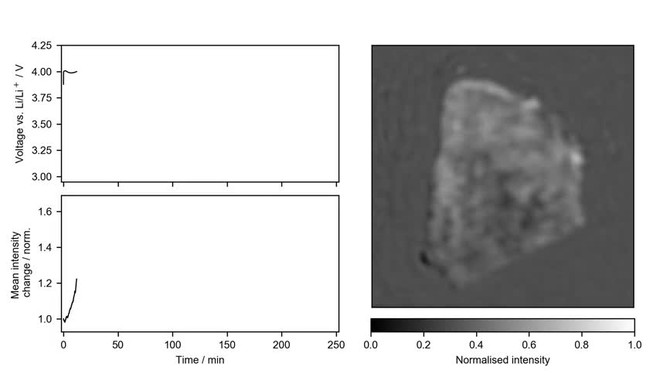Seeing through a Lithium-Ion battery, a scientist found the secret to fully charging a smartphone battery in a few minutes
- Tram Ho
Thanks to this low-cost technique, researchers have identified processes that slow down charging, which, if solved, could help the batteries of most smartphones and laptops fully charge in less than 5 minutes.
Specifically, researchers from the University of Cambridge reveal that their technique will not only help improve current battery materials, but also speed up the development of the next generation of batteries. one of the biggest technological hurdles to overcome on the road to a transition to a fossil fuel-free world.
While lithium-ion batteries have undeniable advantages, such as their relatively high energy density and long life cycle compared to batteries and other energy storage methods, they can also overheat or overheat. even explode, and the production cost is quite expensive. Besides, the energy density of lithium-ion batteries is still far behind that of gasoline. So far, that’s why they’re unsuitable for mass use in two key types of clean technologies: electric cars and grid-scale solar energy storage systems.

” A good battery is one that can store more energy, or can charge it faster – ideally both, ” said co-author Dr Christoph Schnedermann from Cambridge’s Cavendish Laboratory. ” But to make better batteries from new materials, and to improve the batteries we’re already using, we need to understand what’s going on inside them. “
To improve lithium-ion batteries and help them charge faster, researchers need to monitor and understand what is happening in the materials used under real-time conditions, in real time. Currently, to do this requires complex techniques such as X-ray tomography or electron microscopy, which are time consuming and expensive.
” To really study what’s going on in a battery, you basically have to use a microscope to do two things at once: you need to watch the battery charge and discharge for several hours, but also take pictures. very quickly processes are going on inside the battery ” – according to author Alice Merryweather.
The Cambridge team has developed an optical microscopy technique called interference scattering microscopy to observe the processes in progress. Based on this technique, they were able to observe individual lithium cobalt oxide particles (commonly known as LCOs) charging and discharging by measuring the amount of scattered light.

They found that LCO goes through a series of phase transition reactions during the charge-discharge cycle. The phase edge in the LCO particles moves and changes as the lithium ions enter and exit. The researchers found that the movement of the fringe differs depending on whether the battery is charging or discharging.
” We found that there are different rate limits for lithium-ion batteries, depending on whether it is charging or discharging, ” said Dr Akshay Rao, who led the study. ” When charging, the rate depends on how quickly the lithium ions pass through the particles of the active material. When discharging, the rate depends on how quickly the ions are inserted into the edges. If If we can control these two mechanisms, we will be able to charge lithium-ion batteries much faster. “
” Considering that lithium-ion batteries have been around for decades, you would think we already know everything there is to know about them, but that’s not the case, ” according to Schnedermann. ” This technique allows us to see how quickly it can go through a charge-discharge cycle. What we really want to find out is to use this technique to study next-generation battery materials. follow – we can use what we’ve learned about LCO to develop new materials “

” This technique is a fairly universal way to study ionic dynamics in solid-state materials, so you can use it in nearly any type of battery material, ” says Professor Clare Gray. of Cambridge’s Department of Chemistry, study co-author.
Because this method has a high throughput, it allows multiple particles to be sampled at the same time across the entire electrode, and will later allow further exploration of what can happen when a battery fails and how to prevent that.
” This experimental technique that we have developed offers a huge change in the speed of technology so that we can keep up with the very fast internal processes of a battery, ” says Schnedermann. . ” The fact that we can actually see those phase edges change in real time is amazing. This technique could be an important piece of the puzzle for developing next-generation batteries. “
Reference: TechXplore
Source : Genk
